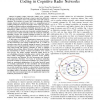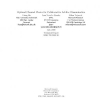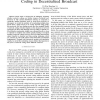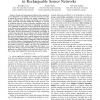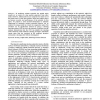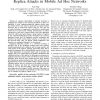INFOCOM
2010
IEEE
13 years 10 months ago
2010
IEEE
—Cognitive Radio Networks (CRNs) have recently emerged as a promising technology to improve spectrum utilization by allowing secondary users to dynamically access idle primary ch...
INFOCOM
2010
IEEE
13 years 10 months ago
2010
IEEE
INFOCOM
2010
IEEE
13 years 10 months ago
2010
IEEE
Abstract—Wireless sensor networks (WSNs) are typically composed of low-cost sensors that are deeply integrated with physical environments. As a result, the sensing performance of...
INFOCOM
2010
IEEE
13 years 10 months ago
2010
IEEE
—There exists a certain level of ambiguity regarding whether network coding can further improve download performance in P2P content distribution systems, as compared to commonly ...
INFOCOM
2010
IEEE
13 years 10 months ago
2010
IEEE
— Two major factors that limit the throughput in multi-hop wireless networks are the unreliability of wireless transmissions and co-channel interference. One promising technique ...
INFOCOM
2010
IEEE
13 years 10 months ago
2010
IEEE
—We study power control in a multi-cell CDMA wireless system whereby self-interested users share a common spectrum and interfere with each other. Our objective is to design a pow...
INFOCOM
2010
IEEE
13 years 10 months ago
2010
IEEE
—Energy harvesting sensor platforms have opened up a new dimension to the design of network protocols. In order to sustain the network operation, the energy consumption rate cann...
INFOCOM
2010
IEEE
13 years 10 months ago
2010
IEEE
Abstract—When forwarding packets in the Internet, Autonomous Systems (ASes) frequently choose the shortest path in their network to the next-hop AS in the BGP path, a strategy kn...
INFOCOM
2010
IEEE
13 years 10 months ago
2010
IEEE
— In multi-hop wireless networks, the mobile nodes usually act as routers to relay packets generated from other nodes. However, selfish nodes do not cooperate but make use of the...
INFOCOM
2010
IEEE
13 years 10 months ago
2010
IEEE
—A common vulnerability of wireless networks, in particular, the mobile ad hoc network (MANET), is their susceptibility to node compromise/physical capture attacks since the wire...
